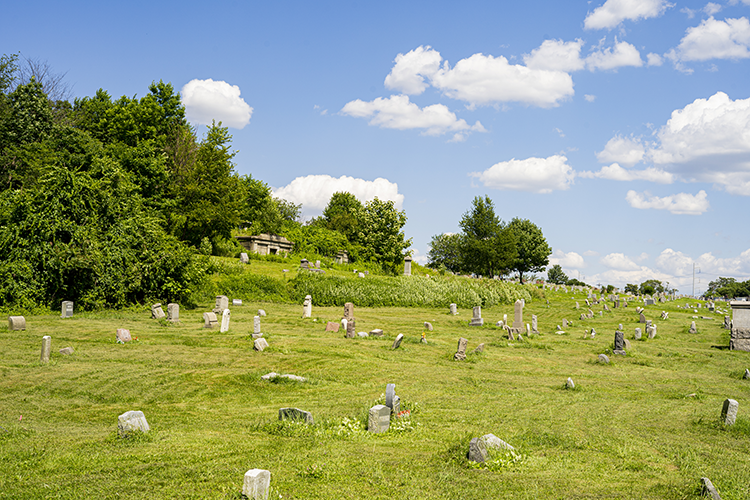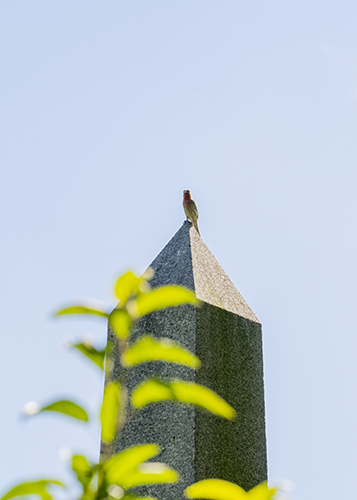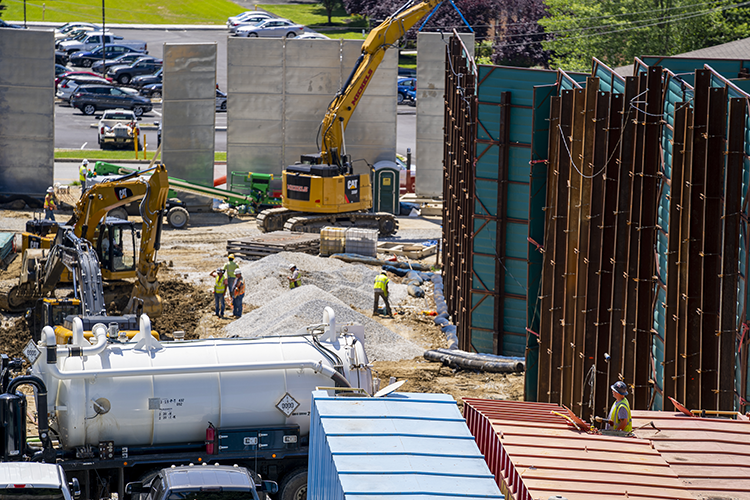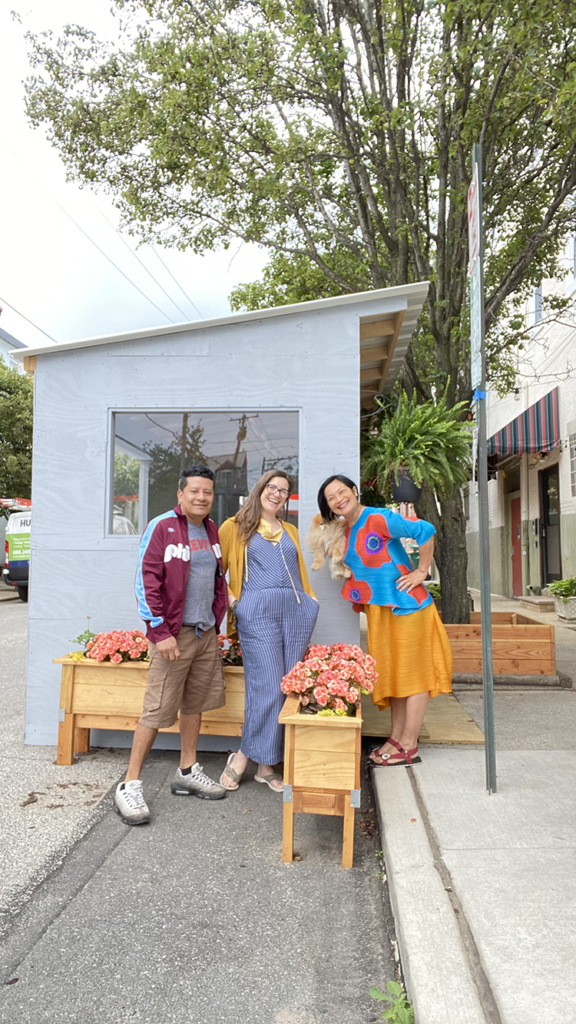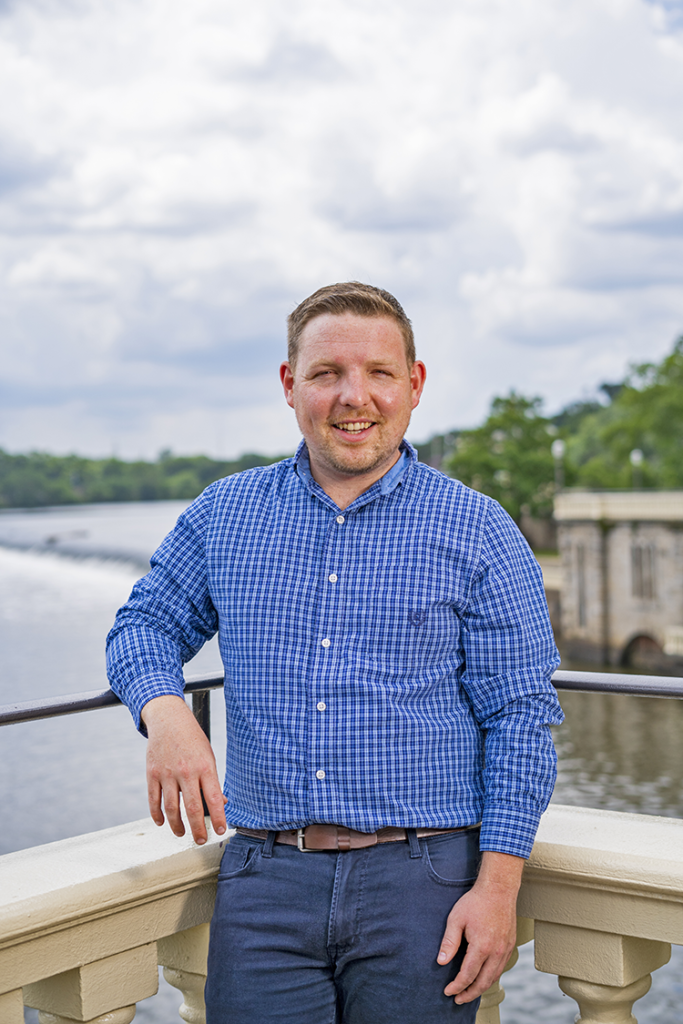Straddling the border between Southwest Philadelphia and Delaware County, Mount Moriah Cemetery has long been one of my favorite places to observe wildlife. I turn up salamanders and snakes. I watch deer watch me before snorting in alarm and bounding away, white tails flashing. More than once a red fox has kept an eye on me from down a long path between the headstones.
Each encounter has been a pleasure but, unfortunately, a pleasure tempered by a little guilt and sadness.

Force of Nature
One of the reasons Mount Moriah has been such a great place to observe wildlife is its state of neglect. Impenetrable thickets of Japanese knotweed cover many sections. Others are dominated by sassafras. Elsewhere, gravestones are barely visible amid meadows of wavy grass, and growing trees push monuments aside by another half-inch every year until they topple to the ground.
The cemetery opened in 1855 as a beautifully landscaped “bucolic” cemetery designed to serve as a park as much as a burial ground.
It was operated by the Mount Moriah Cemetery Association, the last member of which died around 2004, according to Jennifer O’Donnell, board secretary for the Friends of Mount Moriah Cemetery. The cemetery subsequently closed to burials in 2011, by which point much of the cemetery’s nearly 200 acres had been ceded to nature.
That wild character of the abandoned cemetery might make for great nature watching, but it gets in the way of the cemetery’s role as a place where people can remember and visit deceased loved ones.
“First and foremost this place is a cemetery,” explains O’Donnell, as we walk around its Philadelphia side. “We want people to be able to access the graves of their family members. So looking at a hillside like this, where there is so much overgrowth, you can’t just walk in there. That doesn’t meet the [access] requirement for us.”
Green-to-Gray Ratio
The volunteer friends group started up in 2011. Since then it has been working to hack away at the vegetation, repair damaged monuments, and help family members locate graves.
Lucky for nature lovers like me, the friends are also working to keep some of the cemetery’s wild character.
“We also are not looking for golf course–manicured ground,” says O’Donnell. “Trying to find the balance where people can still access and visit, but it’s not manicured grass, is the biggest challenge.”
The friends group’s Green Team has been figuring out what this might look like. On a warm morning in May I joined O’Donnell, Green Team members Jo Cosgrove and Kate Benisek, as well as Heather Kostick, a Drexel graduate student studying cemetery biodiversity, to walk through Mount Moriah and talk about their work.
“Trying to find the balance where people can still access and visit, but it’s not manicured grass, is the biggest challenge.”
—Jennifer O’Donnell, Friends of Mount Moriah Board Secretary
We paused at a grove of tree of heaven, an invasive East Asian species that is difficult to kill and that serves as a favorite host for the infamous (and also invasive) spotted lanternfly. A yellow warbler sang overhead.
Although unanimous in their decision to clear the trees and replace them with native evergreens that would be more valuable for wildlife, the group debated the details of how to proceed: cut it all down at once and lose the shade or do it gradually year by year? How would the all-volunteer group pay for the new saplings and then tend them as they spread their roots and got established? How would they get water to that patch of hillside, far from any spigots?
Other similar cemeteries in Philadelphia operate with paid staff and contractors, and the differences in management style offer Kostick an interesting angle for studying biodiversity in urban greenspaces.
“I thought it would be cool to look at the biodiversity of cemeteries because they’re often overlooked as urban green spaces. And urban green spaces are often seen as these islands of green in a sea of gray and brown,” she explains.
Kostick, who found her initial research project looking at snails in Jamaica scuttled by the COVID-19 pandemic, decided to shift her attention to habitat she could access without crossing international borders.
She’s studying the plants and animals (including snails) at Mount Moriah as well as at Laurel Hill Cemetery and The Woodlands.
For example, she is trapping flying insects and comparing what she finds at each cemetery.
All three cemeteries have embraced their role as spaces for nature as well as for memory.
The Woodlands, for example, offers regular nature walks as well as events celebrating nocturnal wildlife like bats and fireflies.
The week after my visit with Kostick and the volunteers, I returned for a walk with my 2-year-old daughter.
We followed deer tracks and listened to singing birds (logging 29 species that morning). We enjoyed the vivid purple of spiderwort blooming along a path. We’ll keep coming back as the cemetery finds a new balance between human history and nature.

